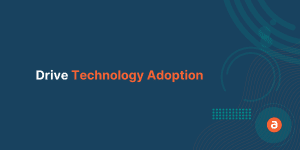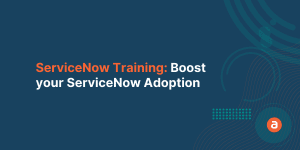Employee training is an ongoing and evolving process. Especially with the rapid technological advancements cropping up every day, employees need to gain the necessary knowledge and get trained regularly to keep their skills sharp.
Any organization that wants to have better-equipped personnel must invest in training programs. To nurture employees’ skills and knowledge, companies must have solid steps in place to train their employees.
Keeping your employees engaged and growing instead of stagnating might be challenging for your business, but it is very important to help ensure your workforce’s success. This can be achieved by focusing on their learning and development at work instead of their performance.
Why On-The-Job Training is Important?
On-the-job training is important as it allows employees to gain the most accurate insights on what a particular role entails and how their job will look on a daily basis. It allows employees to understand the workplace expectations, which programs and equipment are used, and what skills they need to complete their tasks successfully.
On-the-job training is essential because it symbolizes an opportunity for employees to develop their knowledge and enhance their business skills to become extra productive in the workplace.
What are the Benefits of On-The-Job Training?
On-the-job training is an ongoing and systematic process. The employee training program aims to create more capable technicians in the work environment and boost employee productivity and performance.
The top 3 benefits of on-the-job training:
i. Faster training process
Employees tend to learn faster when they are learning something by doing it. Furthermore, when they’re trained into position, employees experience a much more seamless and faster onboarding process. A great onboarding experience usually means higher retention later on.
ii. Employees accountability from the beginning
When they have the opportunity to learn by doing, employees are held accountable for the job they do which increases trust and respect towards the employer and keeps them highly motivated.
iii. Improved employee productivity and performance
The traditional way of onboarding and training causes loss of productivity and wastage of resources. With on-the-job training, employees tend to be more productive and accurate.
On-the-job training is the pillar of enterprise development. If an enterprise wants to survive and grow, it must improve the quality of its employees with the help of activities such as on-the-job training.
Effective Steps for on-the-job training program
Here are the 5 Effective Steps for on-the-job training (OJT) program to keep your employees learning at work,
- Define organizational training objectives
- Develop an action plan for training
- Plan your Implementation strategy
- Determine which tools are required
- Monitor the training program progress
1. Define organizational training objectives
The first step you need to take is to identify the need for training. Perhaps you could conduct a gap analysis and see if your employees lack certain skills. By doing this, you should be able to identify which departments or employees the training program should target. When creating an exercise plan from scratch, you need to evaluate the areas you want your employees to focus on.
Training-needs assessments (organizational and individual) will help you identify any gaps in existing employee training programs and employee skill sets. These gaps must be analyzed and addressed by the organization’s on-the-job training objectives. The ultimate on-the-job training goal is to bridge the gap between current and desired employee performance.
Assessment is a highly crucial part of successfully developing a training program. You will be answering questions such as:
- What do your employees want to know?
- How do your employees learn adequately?
- What do your employees expect from the training?
2. Develop an action plan for training
On-the-job training allows workers to experience working in conditions that are close to situations that they would expect to see every day. It will give them the necessary exposure to tools, equipment, and even hazards so that they develop the necessary senses to deal with the work efficiently and any problems that may arise therefrom.

While developing the on-the-job training program, the level of training that is provided and the learning styles of the participants should also be considered. Only 29% of employees are “very satisfied” with their current professional advancement opportunities available within their company. This satisfaction rate must be improved by focusing more on employee learning opportunities.
Companies can perform experiments like A/B testing with their initiatives and collect feedback to make adjustments well before launching the training program company-wide.
3. Plan your Implementation strategy
In the implementation phase, the on-the-job training plan is nurtured and brought to life. This is the phase where the program actually happens.

The implementation of the employee training plan should consider employee participation and learning objectives and KPIs related to training activities and related resource planning. The training plan is then officially launched, promoted, and implemented within the organization.
The implementation of the employee training program is the launching and promotion period. This is where the progress of the participants is monitored to see if the program is effective or not. You can also identify if the program needs any revision or improvement for the succeeding implementations.
4. Determine which tools and systems are required
Without the buy-in of top management, employee training plans will not succeed. The managers and team leaders must also understand the employee needs and help them with the right tools to make work easier.

Whether it be tools or time, the company needs to provide sufficient resources for its employees to facilitate effective learning and development. Employee productivity and output will not improve if the tools they have to work with are inadequate.
Tools like Digital Adoption Platforms can help companies increase employee efficiency, productivity, and data quality. A DAP tool like Apty provides on-screen guidance that shows employees how to complete a task, prompts them to fix errors, and proactively enables business process compliance.
5. Monitor the training progress
Ensure your employees have access to all the available learning opportunities at work. Providing transparency and visibility of employees’ growth can motivate them to perform better. Companies can reward them for their short-term achievements, which can boost employee morale and productivity.

Think of what you want to achieve by training your employees. What skills do you want them to achieve? Are you targeting any particular performance metrics? How do you want them to improve?
Make sure you analyze and get reports about employees learning activities. This way, you’ll be able to track employee engagement rate and their performance.
How to make the most out of on-the-job training?
Four things that companies need to do to ensure that their workforce makes the most out of their on-the-job training are:
- Have an open communication channel
- Provide them with the right environment
- Make sure that they’re proactive with their efforts
- Leverage a tool that can ensure the success of training initiatives.
A. Be open for feedback – For long-term success and sustained training effect, you must get employees’ feedback. Communicate and connect with your workforce to avoid misunderstandings. Understand their needs and make your training more seamless and efficient.
Provide your employees with the right environment and the right equipment to empower their growth and work-life balance. This ensures that your workforce is engaged throughout your training program.
B. Be more proactive with your programs – You must keep looking for ways to optimize and improve your training processes which can help you measure the effectiveness of the training program and streamlines employees’ growth.
C. Leverage Digital Adoption Platform – A DAP can provide in-app walkthroughs that allow employees to complete their tasks quickly, seamlessly, and accurately. Employees no longer need any external assistance when you have a DAP in place to guide them through complex processes and address challenges by themselves.
On-the-job training plan template
On-the-job training makes it easier for individuals to learn and develop new skills, and adapt to new work environments more efficiently. Employees who undergo such training have more insight on how to act and function in their work environment.
Companies that invest in improving on-the-job training programs will have a stronger and more skilled workforce. They must keep track of their training programs with the help of on-the-job training plan templates. On-the-job training plan templates will depend on the company and the role that the employees are being trained for.
Your training plan templates must include the skills and goals that have been set for the trainees. It should list down the skills of your employees that you want to focus on, along with an explanation of their current status. With every skill, write down an estimate of the total hours of training needed to achieve the desired outcome and the total budget you will need for the entire program.













